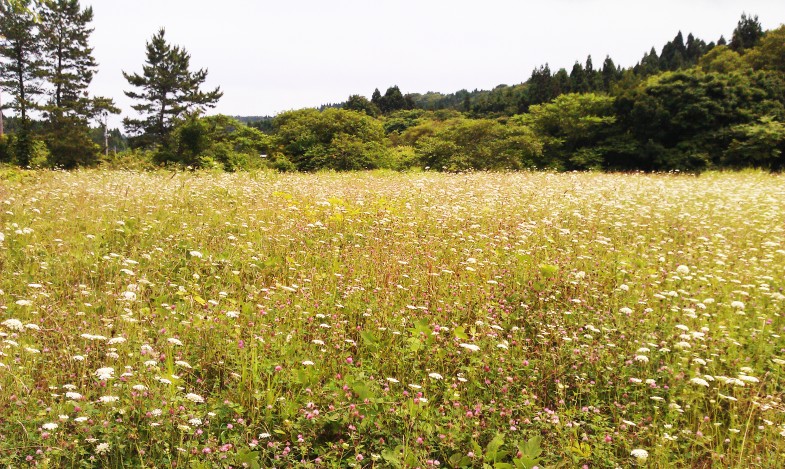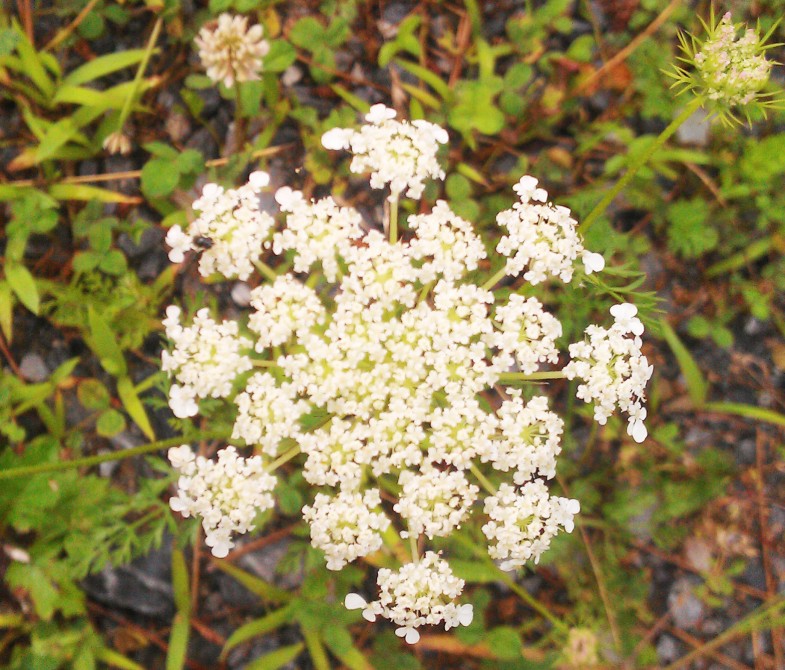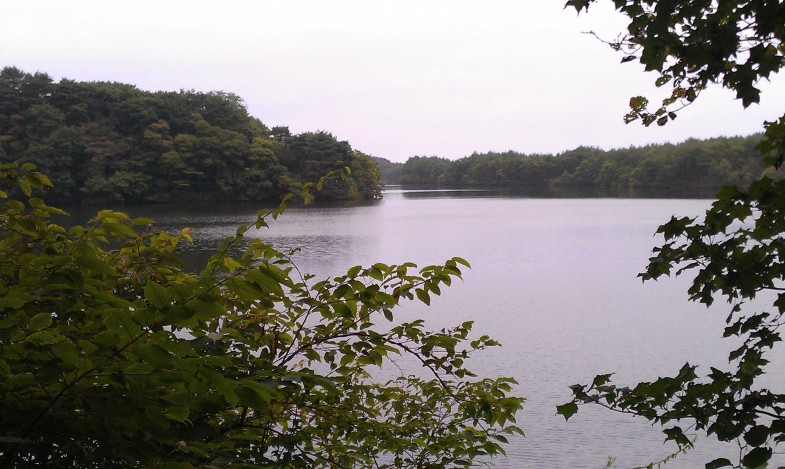
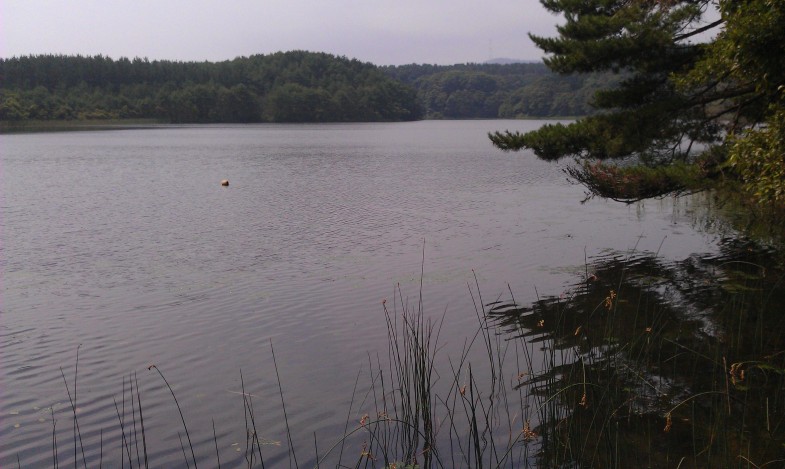
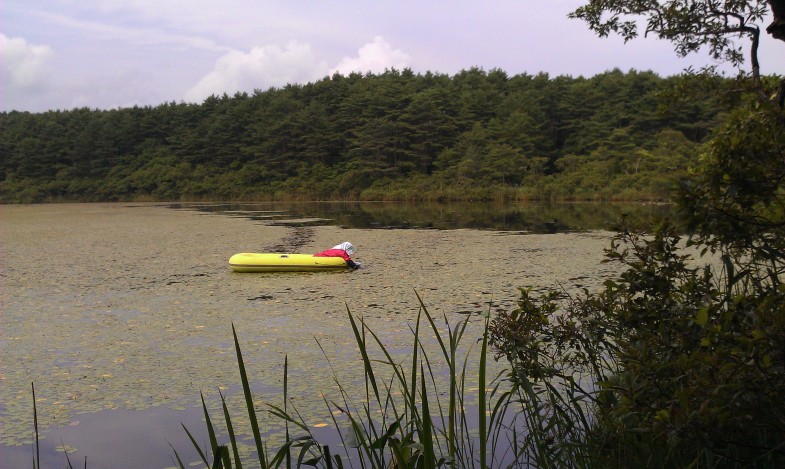
O que é "lago de dunas"? A praia de areia cria ondulações devido ao vento.、É um pântano de água doce criado naturalmente por um rio que deságua em uma depressão (Sagata, Prefeitura de Niigata, etc.)。A areia do mar sobe como um dique devido às correntes e ondas do oceano e bloqueia a saída、É diferente de lagos salgados, como o Lago Saroma e Hachirogata)。O próprio lago de dunas é uma existência preciosa que está sendo perdida em todo o mundo、Criação de um ambiente biologicamente valioso。
Sand dune lake is a natural freshwater pond in a sandhill. It was shaped by wind. The wind had been carring sand and formed ups and downs, and then water stream into hollow places. It is not only very valuable existence itself in the world but also it gives important environment for biodeversity that’s being lost.
Na vila de Higashidori、Existem muitos "lagos de dunas" grandes e pequenos (existem 13 pântanos nomeados apenas)。Higashidori Village, Sarugamori Dunes e Backswamp foram selecionados como uma das 500 zonas úmidas importantes do Japão (na verdade, pode-se dizer que muitas partes da Península de Shimokita receberam esta seleção).。Este macaco é uma duna de areia da floresta (largura de 1 a 2 km)、O "Shimokita Sand Dunes" é uma combinação do comprimento total de 17km) e as dunas de areia que entraram um pouco para o interior.、Pouco se sabe, mas na verdade é a maior duna de areia do Japão。A razão pela qual não é conhecido、Florestas à prova de vento e areia cercam as dunas、É difícil ver、A maior parte é usada pelo Ministério da Defesa para locais de teste balístico, etc.、Porque está fora dos limites。
There are many dune lakes in Higashi-dori village. Named lakes are minimum 13s. Salugamori sandhill (1~2 km width, 17 km length) include the rear wetland in this village has selected one of 500 of the important wetland of Japan (Actually most of Shimokita peninsula is selected also). Additionaly, Shimokita sandhill (includ this Salugamori sandhill with the next ones) is really the biggest one in Japan. However almost all japanese don’t know of it. One of the reason is that this place is hidden from the roads by pine grove for protect the wind and the sand. The other one, here is off limited, because this ares has been useing for test site of trajectory of Ministry of Defence (MD).
O lago de dunas em si está fora da área do Ministério da Defesa、Parece que alguns deles também são usados para a pesca.。No entanto, a floresta de pinheiros para proteção contra vento e areia também cresceu.、Muitas das estradas que levam ao pântano estão desaparecendo。O declínio da população e o envelhecimento também estão progredindo aqui、A pesquisa acadêmica não está sendo conduzida agora。
These are out of the area of MD. A few lakes of it look as useing fishery sometimes but not often. Most of the roads to go there is being lost by growing thickly weeds and pine grove. Creasing depopulation and ageing there. Academic reserch stopped now.
A foto é do topo (organizada de norte a sul)、Onuma、Sakyonuma、Aranuma。O tamanho e a profundidade são ligeiramente diferentes, mas são todos naturais.。Onuma é um macrobáquio、Sakyonuma é famosa por Himemarimo (Aegagropila Linnaei)、O que está acontecendo agora que não foi investigado?。Aranuma tem 1-2 m de profundidade、Estou escolhendo uma proteção de água (Brasenia schreberi)。
Photo:(above) O-numa. Small river prawn lives in. (midlle) Sakyo-numa. Sakyo-numa is famous for “Hime-malimo” (small moss ball), but how is it now? (bottom) An old woman was picking “Jun-sai” (the water shield) from the water at lake Ala-numa. ※numa means lake or pond. All of dune lakes are Nature.
